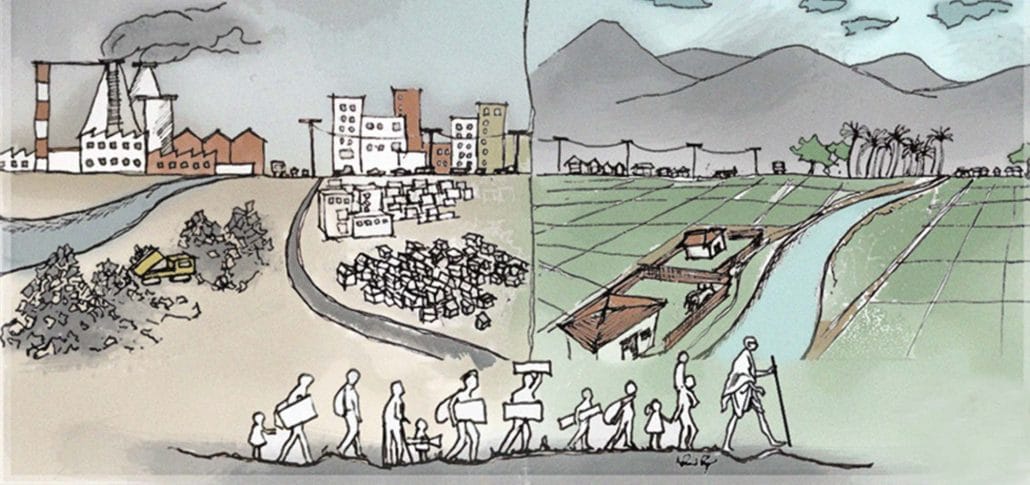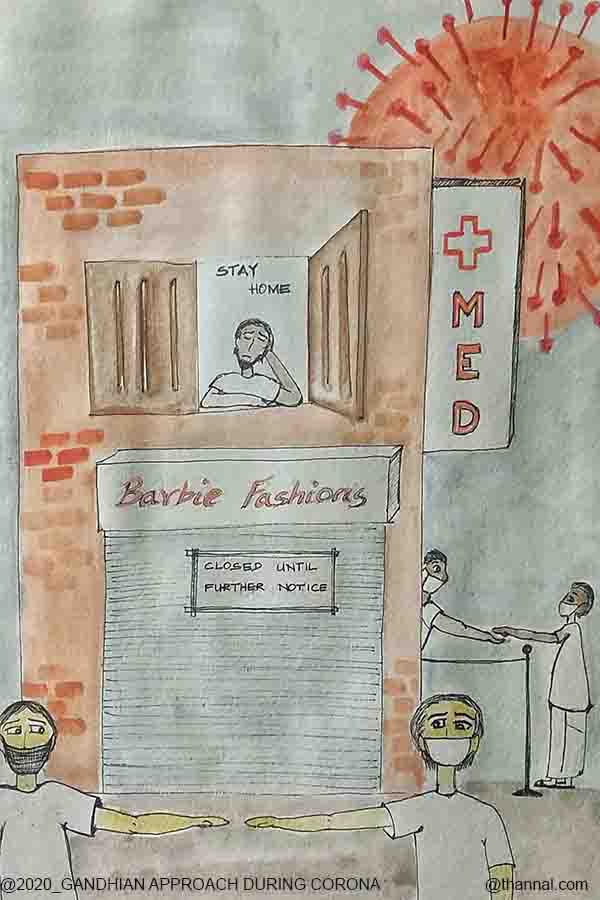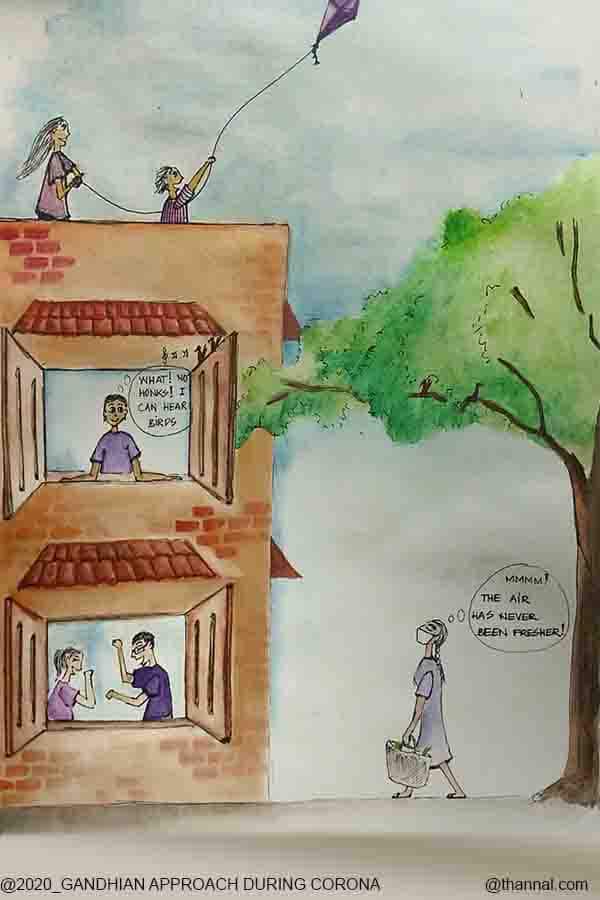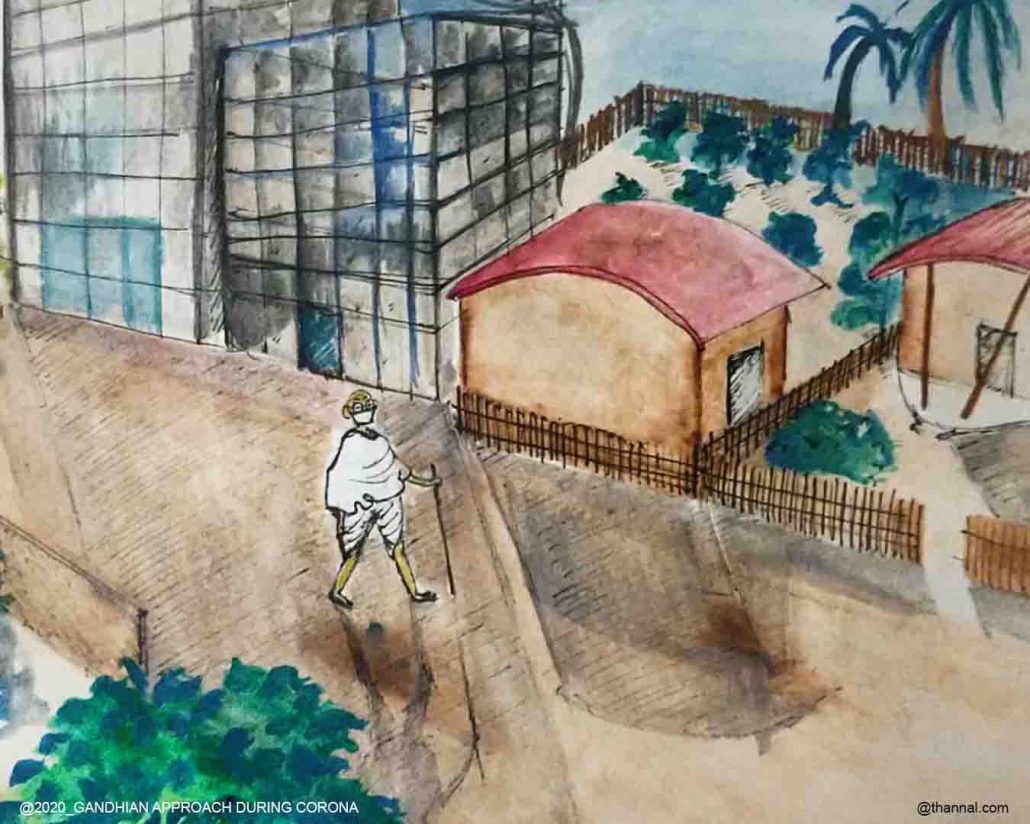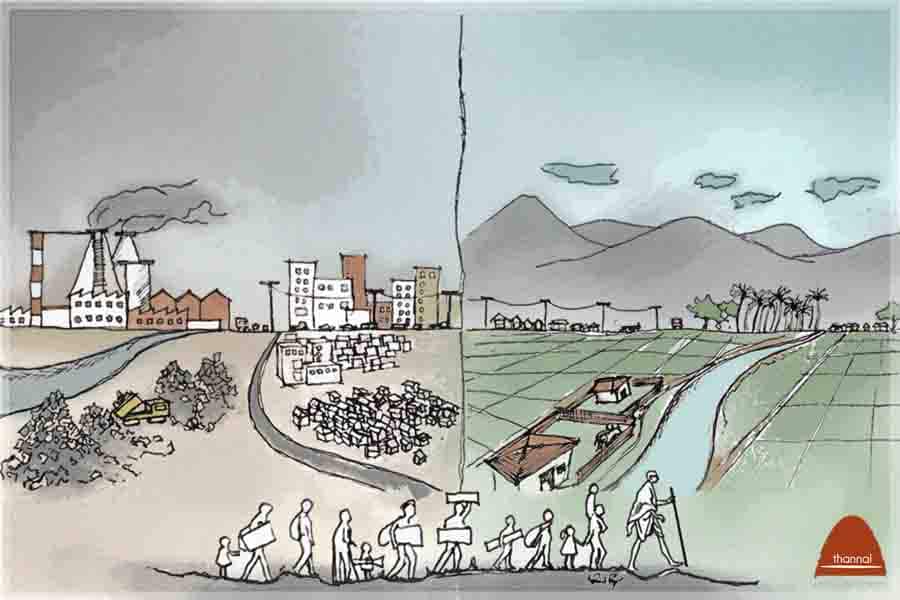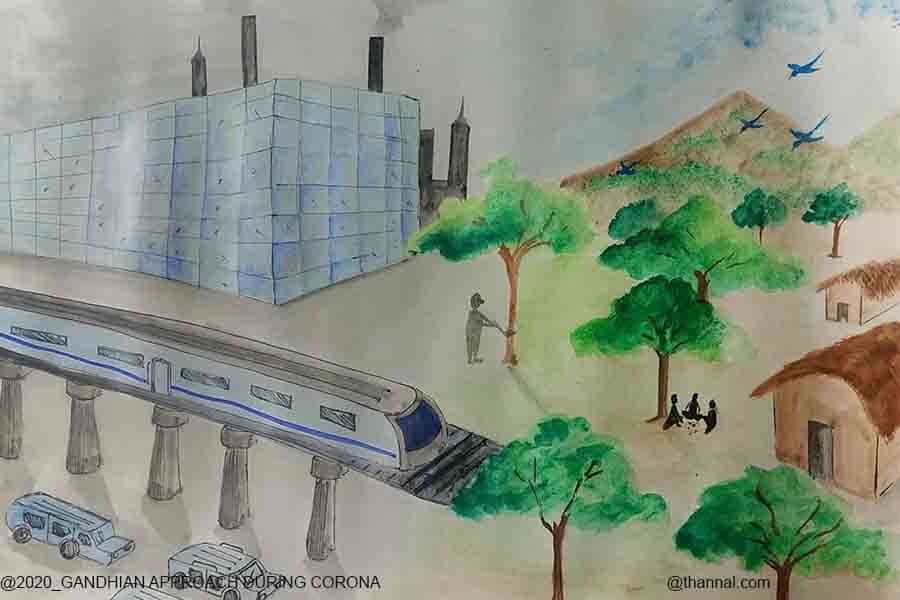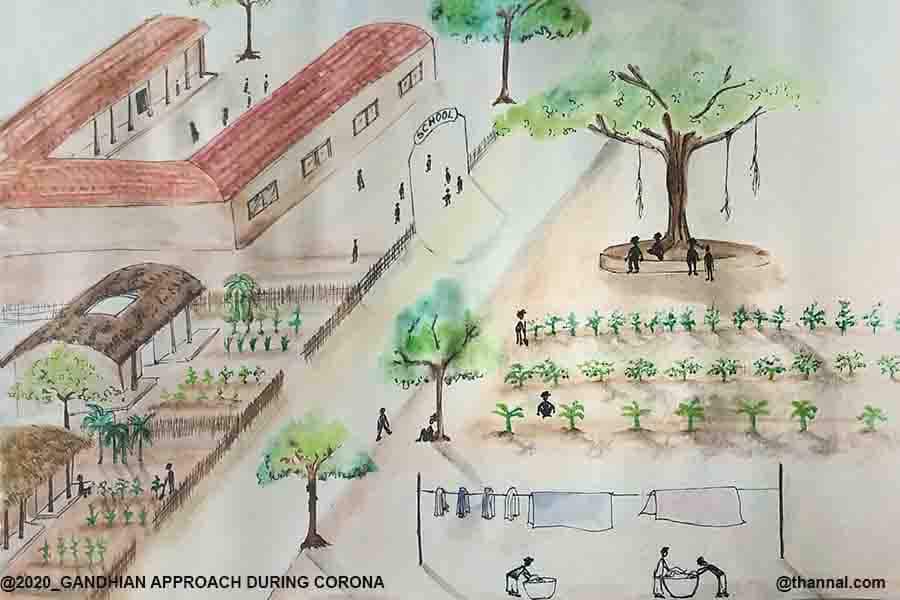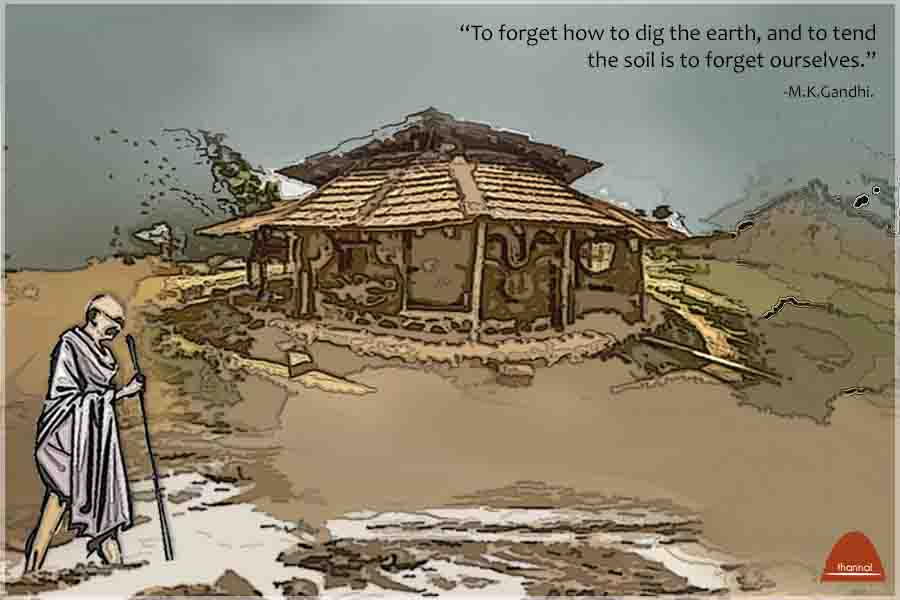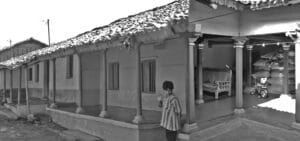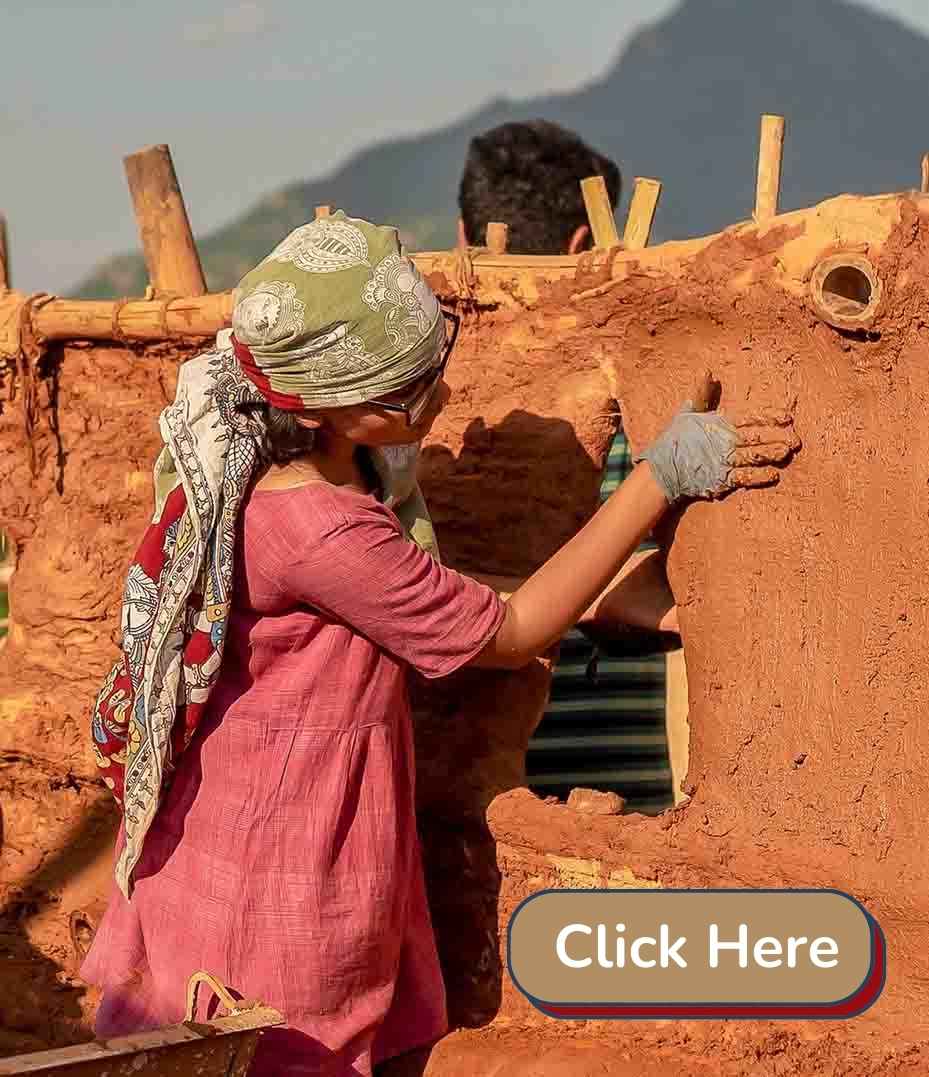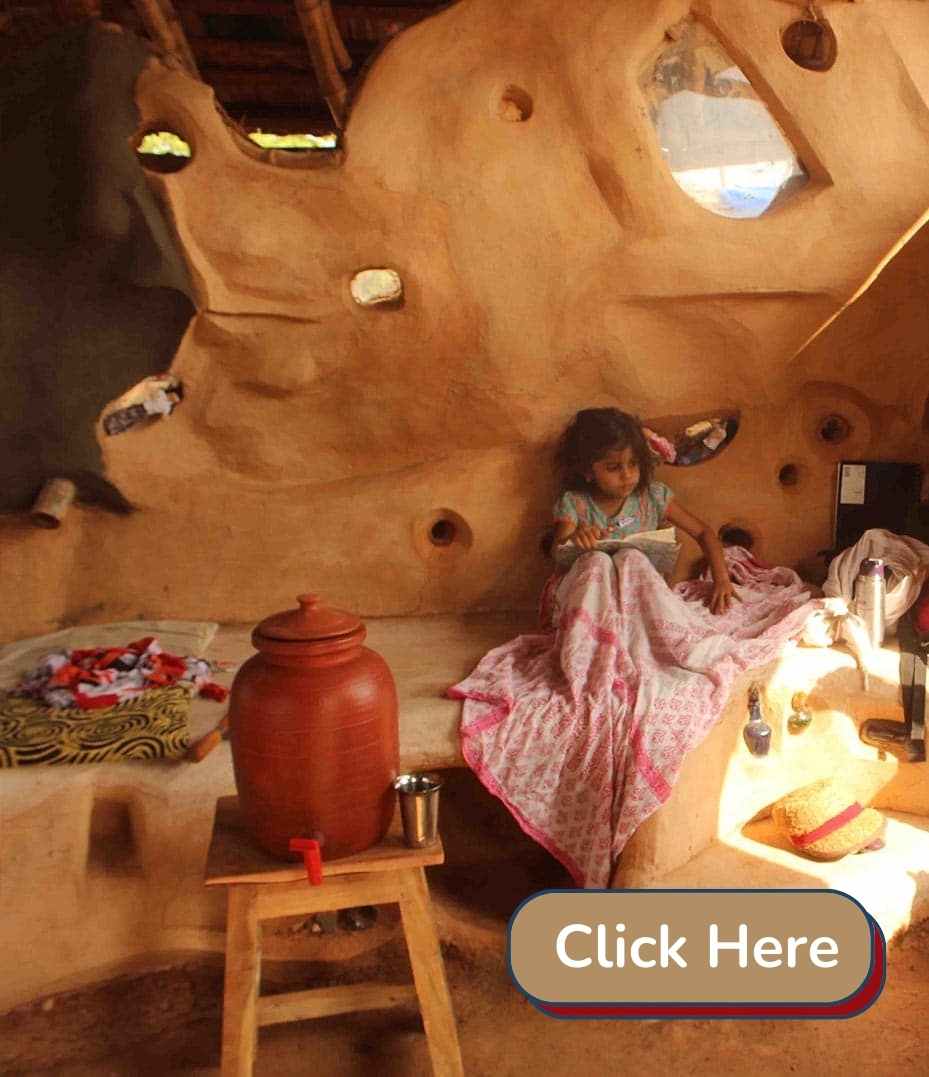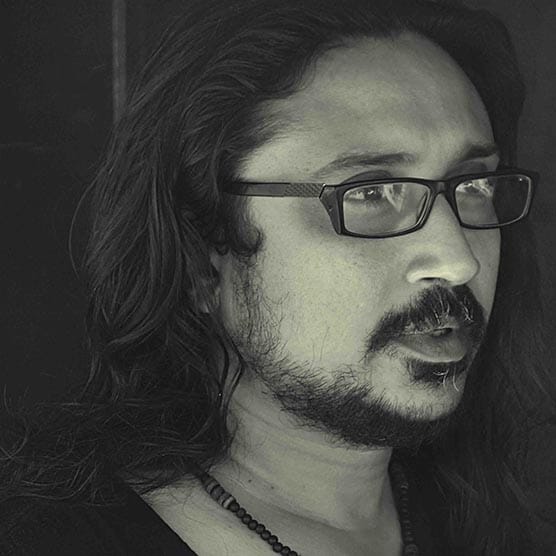This article belongs to the Ageless village series of Thannal homes blog. Taking a Gandhian perspective, this article looks at the challenges that are currently faced by our nation and tries to identify the actual cause and solution for it. Also, it creates an understanding of the term ‘swaraj’ and its relevance in today’s India.
Contents:
- The pandemic: An outbreak in India.
- An ultimate failure of modernism.
- Taking a Gandhian perspective.
- The true swaraj.
- A Gandhian vision of an ideal village swaraj.
- Shelter making.
- Indic Education system: The Beautiful Tree Uprooted.
- Bread labour.
- His mantra of ‘Simple living and High thinking’.
- Relevance of Gandhian view in today’s India.
The pandemic: An outbreak in India.
Stepping into the beginning of a new decade, with many hopes and dreams as a nation, and when everything seemed normal, India identified its first outbreak of the global pandemic covid-19. And with it, the consequent nationwide lockdown.
Since then, our lives have been transformed in ways that we could not possibly have imagined. After second-guessing everything, from being close to our loved ones to travelling, masking our faces, and social distancing from our family and friends, most of us even fear to step out onto the streets and suspect almost everything!
But wait, let’s look at the silver lining!
Looking at the brighter side, this pandemic has positive impacts that we must not fail to appreciate.
We have identified the true essentials of our daily lives, given up on a lot of luxuries, improved our disciplines of hygiene, developed new habits and hobbies, started exploring things around us, and to most of us, this crisis has got ourselves, a step closer to our family and the nature!
More to it, our cities breathed a while.
Shutting of roads and factories had sparked a dramatic drop in pollution, unseen in years. In addition, a pause in the construction industry (which is the major contributor to the overall carbon footprint) and the burning of fossil fuels kept the carbon dioxide emissions low for a while.
The honking and bustling noises had been replaced with birds chirping, animals replaced vehicles taking up the roads, the clear blue skies, improved air and water quality, and what not! How beautiful our cities would be, if we could retain them the same way, even in the absence of the pandemic!!!
Meanwhile, driving away from the polluted air, along with it, this crisis also drove away millions of migrant labours from the cities to their own rural pockets!!!
An ultimate failure of modernism.
A million people were abandoned on highways, facing an uncertain future and walking miles and miles to their own native rural pockets. Though the pandemic challenges create havoc across the world globally, India is also facing another massive challenge of unemployment and starvation of its huge marginalized population, migrated to the urban centres.
The modern Indian structure proves to be unstable and has ultimately failed to lend its people, a hand.
Taking a Gandhian perspective.
The Father of our Nation, Gandhiji, anticipated these current disastrous consequences of moving away from Indian traditional core values, long back. He is foresighted that the major development in technology would lead to the impoverishment of India. And, how excessive use of technology breeds concentration of power in a few hands and marginalization of the other.
Gandhiji compares the modern Indian cities to the Upas tree- a poisonous tree that destroys all existing native life around it.
Among the developed Indian cities, are these enormous number of rural pockets that have not changed much since independence, except for its lost population migrated to the city centres, making Gandhiji’s anticipation of rural poverty and economic disparity, a reality!
India, A land of villages.
According to Gandhiji, “India lives in her 7,50,000 villages” and, “Our people are rooted to the soil‘.
“We are inheritors of rural civilization. The vastness of our country, the vastness of the population, the situation and the climate of the country have, in my opinion, destined it for a rural civilization… To uproot it and substitute for it an urban civilization seems to be an impossibility.”
His idea started from the very foundation of Indian society – its villages as the basic units for stable self-sufficient republics.
The true swaraj.
According to Gandhiji, the term Swaraj is a sacred word and means, Self-rule and Self-reliance. He also means a rule of all people, for all.
“It is Swaraj when we learn to rule ourselves… But such Swaraj has to be experienced, by each one for himself…”
A Gandhian vision of an ideal village swaraj.
“My ideal village will contain intelligent human beings. They will not live in dirt and darkness as animals. Men and women will be free and able to hold their own against anyone in the world. Here, we would regard the humblest and the lowest Indian as being equally the ruler of India with the tallest in the land.”
In his text called the Village swaraj, Gandhiji explains every aspect of a completely self-sufficient and reliant village republic he envisions.
“An ideal Indian village will be so constructed as to lend itself to perfect sanitation. It will have cottages with sufficient light and ventilation built of material obtainable within a radius of five miles of it.”
Do you want to study Natural Building Online ?
Shelter making.
A study of the traditional Indian village planning, shelter planning and other ancient architectural wonders that are still standing tough in our villages, would teach one, the Gandhian approach to shelter making – The art of procuring natural building materials available at the very place and raising a shelter out of it, that would suit the location and its climate. This way, the shelter would no more be a luxury as it is now but, would be a basic necessity that can be fulfilled by every individual.
Here, you can see 7 top Indian homes built in the traditional Indian way of construction that are still standing strong – 7 top traditional mud homes India
“The cottages will have courtyards enabling householders to plant vegetables for domestic use and to house their cattle.”
This harmony in living, shelter making and food production was once the primary principle of Natural building and living and an inseparable part of the ancient Indian civilization.
Such harmony can still be seen in the 150 Year Old Natural Home Of A Natural Farmer
“The village lanes and streets will be free of all avoidable dust. It will have wells according to its needs and be accessible to all. It will have houses of worship for all, also a common meeting place, a village common for grazing its cattle, a co-operative dairy, primary and secondary schools in which industrial education will be the central fact.”
Indic Education system: The Beautiful Tree Uprooted.
The Indian education system existed and flourished in India till the 18th century. With the Industrial revolution taking complete hold of our nation, the education system also began to change. The concept of universal education slowly took over the traditional system in India, which drew children into classrooms and has got them to focus on developing just their minds over everything else. This has started distancing an individual from physical labour and his environment. One of the main motives of modern education is to equip huge sections of the population to suit an industrialized world.
Meanwhile, the other parts of the world adopted a typology of education similar to the traditional Indic education, which has flourished and greatly improved their educational standards.
According to Gandhiji, “Genuine education does not consist of cramming a lot of information and numbers in mind. Nor does it lie in passing the examination, but it lies in developing character. It is a real education which inculcates internal virtues (values) in human beings.”
The traditional Indic education system in ancient India was quite different from the rest of the world back then. The main motive of traditional Indic education was to pass on the values, manners, skills, ancestral knowledge and social practice to upcoming generations. In this system, physical labor and art forms were of utmost importance making an individual self-reliant.
Dharampal, an Indian Gandhian Thinker and a writer, with an objective of understanding India’s past, has beautifully presented his factual analysis of the indigenous, inclusive education system that prevailed in India before the colonial period in his book called ‘The Beautiful Tree’
“An ideal village will have Panchayats for settling disputes; it will produce its own grains, vegetables and fruit, and its own Khadi.” This is roughly my idea of a model village.”
Bread labour.
‘The great Nature has intended us to earn our bread in the sweat of our brow.’
Gandhiji used the term ‘bread labour’ to mean that every man has to labour with his body to avail the required food and clothing. Man, without doing enough labour has no right to eat.
“If all laboured for their bread and no more, then there would be enough food and enough leisure for all. Then there would be no cry of over-population; no disease and no such misery as we see around. Such labour will be the highest form of sacrifice’.”
Indian society was primarily agrarian for years. A large population was into farming and cultivating crops that suited the soil types and the climate. All the farming methods employed were in harmony with nature. With the traditional methods of farming, the sector never faced a crisis as now.
Farming went into the hands of technology when Industrialization and modernism took over India. The use of artificial fertilizers and pesticides was opted to achieve an increase in crop production. This made the land lose its fertility and the water tables get over-exploited. Also, now, farmers go for certain types of crops of higher yields and finally end up with loss due to mismatching of soil and environmental conditions.
Moreover, farmers are economically struggling to cope with the increased use of modern amenities. Ultimately, with the death of the traditional way of farming, India also started losing its farming community and its fertile agricultural lands.
To revive the traditional farming practices and restore soil fertility is one of the best ways to fix our mistakes. Here is a model, showing us the way for the same- Thannal Natural Building Grove developed by Thannal, treading the indigenous way.
His mantra of ‘Simple living and High thinking’.
With a shift to western culture, we are also being invisibly influenced to opt the western clothing, western foods, and other products. This ultimately has deteriorated our health and our environment and has led to a fall in the Indian economy.
When asked, if Gandhiji wanted India to lead the same kind of lifestyle as in Britain, his reply was: “It took Britain half the resources of the planet to achieve this prosperity. How many planets will a country like India require?”
Mahatma Gandhi’s values of ‘Simple living and high thinking’ are not only relevant today, but important than ever before. On a personal level too, each individual can benefit by following his lifestyle.
He led a minimalistic life 100 years ago which we think is a modern concept of life. Being a naturalist, Gandhiji experimented with his diet throughout his life. He preferred eating raw, opted for millets, the new superfood that we have recently (re)discovered, and believed in a plant-based diet.
We know how Gandhiji preferred Khadi and boycotted western goods. Khadi is not just a cloth, it represents freedom, legacy, ideology and emotion. Today we talk of threats from single-use plastic, to our carbon footprint and the fashion industry is one of the biggest polluters. This is when khadi becomes important being one of the most environment-friendly fabrics.
Relevance of Gandhian view in today’s India.
The traditional way of life and the ancient Indian structure have evolved over the years to suit our country’s geographical, ecological, and climatic conditions. However, India as a nation, as of today, has moved far away from what is native, what is the most suitable and what is the most stable way of living.
From the day we started drifting away from the native ways of living, we also seem to have gradually headed towards what we face today. The current crisis has revealed how the globalized lifestyle has made us weaker than ever, and self-reliance and self-sufficiency at the local level are what we require.
“I am convinced that if India is to attain true freedom and through India the world also, then sooner or later the fact must be recognized that the people will have to live in villages, not in towns, in huts, not in palaces.”
Reviving the native Indian structure, every village unit would function as an independent yet interdependent village republic, striving to save their economy. And the development of the nation would be throughout, leaving no impoverished pockets and marginalized groups of people.
Maybe it’s time we look back!
With a large young population, we as a nation are ever ready to introduce a change and with it, a new beginning. Like they say, ‘Every crisis is an opportunity in disguise’, this pandemic is a wake-up call to India, spotlighting the relevance of traditional Indian structure and the Gandhian way of life.
Also, being with nature for the past 12 years, Thannal already witnesses the gradual shift of people, back to their villages (reverse migration) and thereby, back to nature. A lot of youngsters, couples, and elders are slowly moving back towards natural homes and our indigenous way of life.
Here, you can find the native farmers from Tamil Nadu taking their first step towards village regeneration back to their own roots- Native Farmers From Tamil Nadu Doing Natural Building.
And so, the time when we start regenerating our rural economy and make the attainment of true swaraj, a reality is not that far away!
Illustration by: Architect Anudipti Arul and Architect Ramani Rajam

Ramani Rajam
This article is by Natural builder Ramani Rajam. This post is part of our Ageless village series,.


